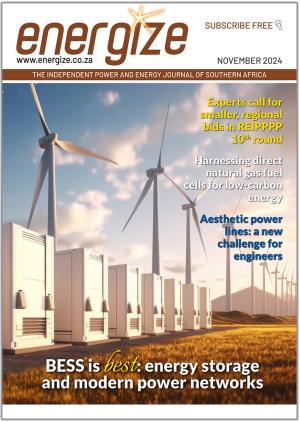Daimler Truck has raised concerns about the disparity between electric vehicle (EV) production capabilities and the infrastructure required to support it, warning that decarbonisation targets in Europe are becoming increasingly costly and unsustainable.
Speaking ahead of the Internationale Automobil-Ausstellung (IAA) Transportation show, Andreas Gorbach, Head of Truck Technology and member of Daimler Truck’s management board, emphasised that original equipment manufacturers (OEMs) are not to blame for the slow adoption of zero-emission trucks. He pointed instead to inadequate EV charging infrastructure and hydrogen refuelling networks, which are failing to keep up with the demands of the transition.
“There are six million trucks on Europe’s roads burning 60 million tonnes of diesel each year,” Gorbach said. “To meet the EU’s 2030 regulatory target of 45% zero-emission fleet sales, we will need 35 000 high-power charging stations. Today, we have just 200.”
The EU mandates that 15% of new fleet sales must be net-zero by 2025, scaling to 45% by 2030. However, the required EV grid infrastructure is significantly lagging, presenting a critical challenge to meeting these targets, Gorbach said. He warned that without substantial investment, the road freight industry would face increasing costs and potential penalties.
On the hydrogen side, the outlook is similarly concerning, with only 100-120 refuelling stations currently available in Europe, compared to the 2 000 needed by 2030. Gorbach said that in order to meet EU net-zero goals, around 400 high-power chargers and 30 refuelling stations must be built each month – a pace that was not being achieved.
The lack of infrastructure is exacerbating the total cost of ownership for electric trucks, such as Daimler’s Mercedes-Benz eActros 600, which are already expensive investments. "Lagging infrastructure and cost disparities make it difficult to justify investment in these vehicles," Gorbach said, adding that this was hampering sales of net-zero trucks.
Daimler, along with other OEMs face hefty penalties for failing to meet emission targets, which Gorbach warned would inevitably be passed on to consumers, pushing up the cost of goods. “This industry is facing the biggest challenge it has ever seen,” he said.
Highlighting the enormity of the infrastructure challenge, Gorbach compared current truck stops to those needed for electric trucks. "Fifty diesel trucks can fill up in one hour. But to charge 50 eActros 600 trucks in the same time, you’d need 35 megawatts of power and significant space. That’s a major investment."
Gorbach urged policymakers to reconsider the current approach to decarbonisation, suggesting that penalties and regulatory targets be scaled back. He called for annual assessments to ensure that progress on infrastructure is aligned with OEM advancements: “There are already world-class zero-emission products in serious production. The bottleneck is infrastructure.”
Without more rapid infrastructure development, Gorbach warned, the market for zero-emission trucks could be stifled, making it impossible for manufacturers to meet regulatory requirements.















